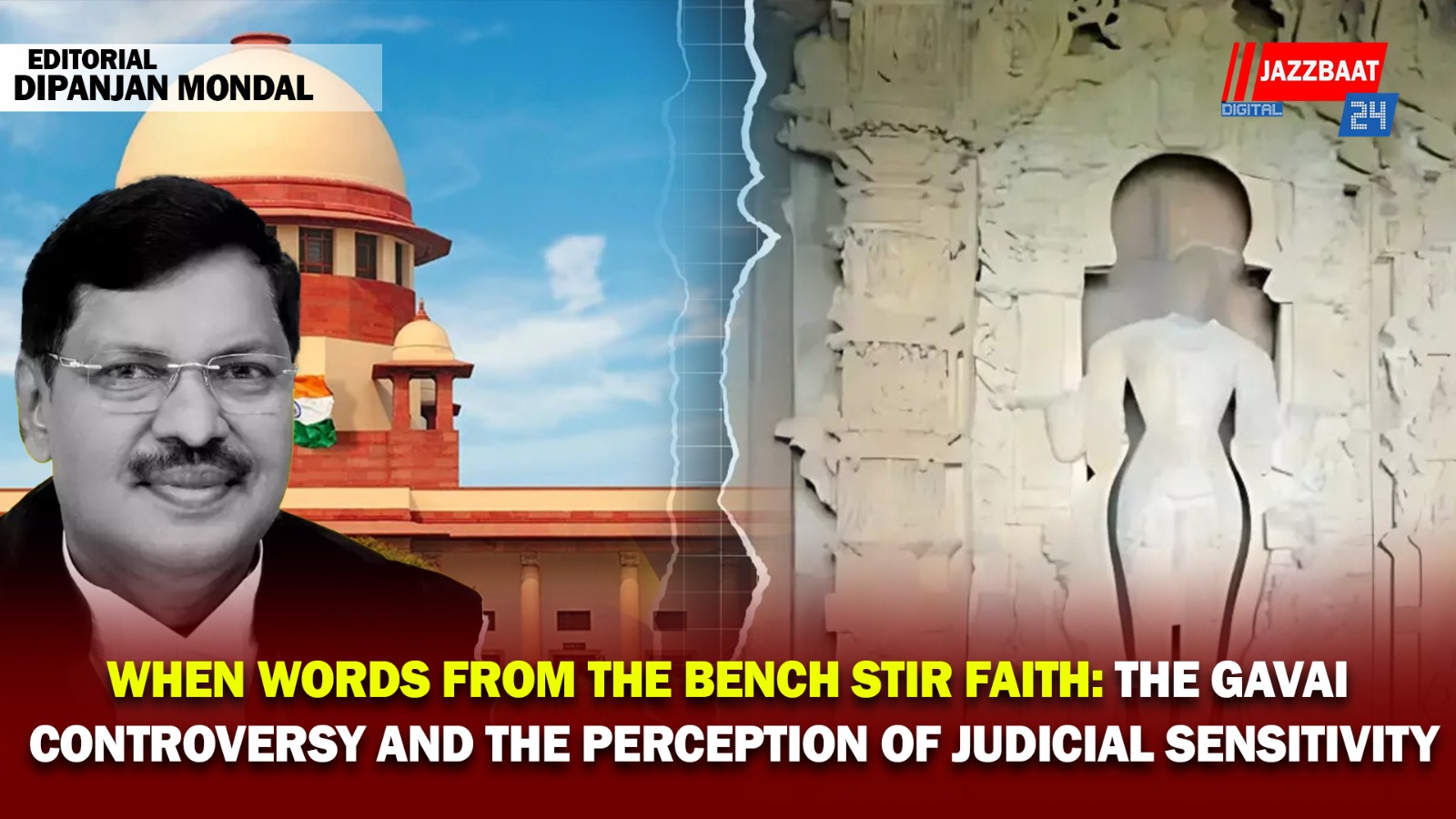When Chief Justice of India B.R. Gavai suggested during a hearing that worshippers might "seek guidance from the deity" regarding the restoration of a damaged Vishnu idol in Khajuraho, he likely intended to convey that the matter fell under the Archaeological Survey of India’s jurisdiction and was not one for frequent court intervention. However, this comment led to a strong reaction: a shoe was thrown in open court, multiple FIRs were filed, social media opinion flared, and conversations emerged about the judiciary’s approach to matters involving faith.
On October 6, an incident occurred in Courtroom No. 1 when a lawyer threw a shoe at the Chief Justice while shouting “Sanatan ka apmaan nahi sahenge.” This act has been widely condemned. Still, an uncomfortable question lingers: did this aggression stem from feelings that the country’s top judge was dismissive of an issue tied to faith?
For years, the Indian judiciary has carefully navigated between constitutional reasoning and religious beliefs. Judges often balance the secular nature of the Constitution with a society influenced by faith. In this context, even a casual remark in court can take on significant meaning. Justice Gavai’s comment, whether intentional or not, emerged during discussions on “Sanatan Dharma,” which are politically and socially charged.
Many legal experts believe the Chief Justice could have demonstrated more sensitivity when dismissing the petition. The issue at hand, restoring an ancient idol, may not have required judicial involvement. However, suggesting that devotees “speak to the deity” seemed to belittle what petitioners viewed as a spiritual concern. In a nation where religion profoundly shapes identity, comments from the highest court resonate across diverse belief systems.
Criticism of judicial tone is not a new phenomenon. Former Chief Justice D.Y. Chandrachud faced backlash for remarks that were sometimes seen as unfairly liberal, as showing a “liberal bias.” In Justice Gavai’s situation, the criticism has sharpened due to the context. Some perceived his remark as mocking Hindu faith. It also came from a Chief Justice who, as a Buddhist and the second Dalit to hold the post, has become a significant figure in India’s social fabric.
This identity, while celebrated, also exposes him to ideological attacks. Moreover, it carries a greater responsibility to show neutrality, not only through rulings but also through every statement in court. Judicial independence involves not just freedom from outside influence; it means appearing fair to all parties, especially when faith is at stake.
The shoe-throwing incident can’t be justified in any way. It was an unacceptable act that endangered the dignity of the judiciary. Nonetheless, the bigger issue lies in communication and perception. Courtroom exchanges are quickly recorded, shared, and circulated on social media. One comment can spread faster than a thoughtful ruling. In this environment, even unintended humor or frustration from the Bench can be perceived as bias.
Public trust in the judiciary relies on more than just verdicts; it also depends on demeanor. When the country’s top judge speaks, each word carries constitutional significance. The courts, while guided by law, function in a society still influenced by symbols and emotions. Therefore, judicial restraint should extend beyond rulings to the language used in the courtroom.
Justice Gavai’s extensive record shows dedication and competence, and his comment likely aimed to discourage frivolous lawsuits. However, the resulting controversy highlights the fragile boundary between judicial independence and perceived insensitivity. In an increasingly polarized world, even a well-intentioned joke can become a divisive headline.
As things settle, the lesson may be less about one individual’s words and more about the institution’s challenges in an era of rapid outrage. The judiciary needs to protect its dignity through verdicts and contempt proceedings. It must also use language that commands respect while being mindful not to offend beliefs.
